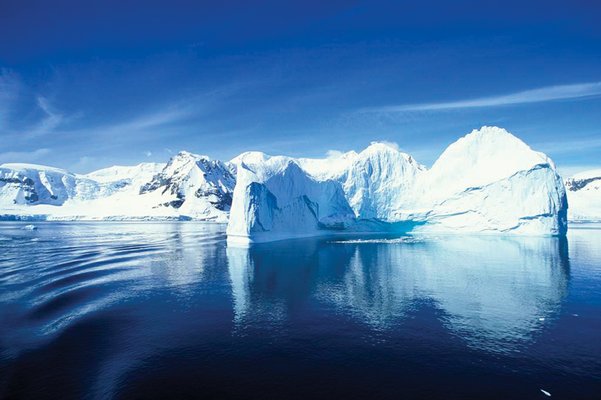
by Nicole Branan Thursday, January 5, 2012

The Antarctic Peninsula is warming - but the warming might have been faster if the Montreal Protocol hadn't slowed the growth of the ozone hole. Michael Collier, ESW Image Bank
In 1987, nearly 200 nations signed the Montreal Protocol to restrict the use of ozone-depleting chemicals. The international treaty helped keep the ozone hole over Antarctica from growing further, preventing an increase in harmful radiation reaching Earth’s surface. Twenty years later, new research suggests that the treaty helped the planet dodge more than one bullet: The Montreal Protocol also prevented significant regional climate change.
The researchers examined what larger ozone depletion would have meant had the treaty not been ratified, says Michael Prather of the University of California at Irvine. What the study demonstrates, he says, is that “if you change ozone concentrations in one place, you start seeing a [climate] response.”
Olaf Morgenstern of Cambridge University in England and his colleagues discovered this after running two model simulations. In one scenario, they loaded the stratosphere with 9 parts per billion of chlorine, the main component of ozone-destroying substances. Such levels would have likely existed by the year 2030 had society not curbed its use, Morgenstern says. In the second scenario, the team used present-day atmospheric chlorine levels of 3.5 parts per billion.
Not surprisingly, the researchers found a decrease in ozone in the 9 parts per billion simulation, with the largest effect over the poles. But they also found that a change in ozone levels triggered changes in surface climate at the poles. The 9 parts per billion simulation, for example, showed a warming of up to 2 to 3 degrees Celsius on the Antarctic Peninsula in the spring. “That’s quite large, especially if you consider that by 2030, global warming would have probably contributed only about half a degree or so of warming on average,” Morgenstern says.
Because ozone filters ultraviolet radiation from the sun and absorbs
infrared radiation that reflects back from Earth’s surfaces, it affects
temperatures and air currents in the atmosphere, Morgenstern says. These
effects set in motion a complicated chain of events that eventually
influences wind patterns and temperatures at Earth’s surface.
With both scenarios, the models showed the Antarctic Peninsula warming,
with the higher atmospheric chlorine levels leading to abrupt warming,
but they also showed the continent’s interior cooling — a detail for
which most climate models cannot account. Yet these patterns are
consistent with current observations, Morgenstern says.
Warming of the Antarctic Peninsula, for example, led to the collapse of the Larsen B Ice Shelf in 2002. Antarctica’s interior, on the other hand, currently bucks the trend of global warming and is instead cooling. The missing detail is likely the ozone, he says. Climate models that include carbon dioxide levels and ignore ozone have not been able to replicate these geographic details, Morgenstern says. The fact that these details show up in the team’s simulations, he says, “suggests that ozone chemistry plays an important role in modulating climate change.”
© 2008-2021. All rights reserved. Any copying, redistribution or retransmission of any of the contents of this service without the expressed written permission of the American Geosciences Institute is expressly prohibited. Click here for all copyright requests.